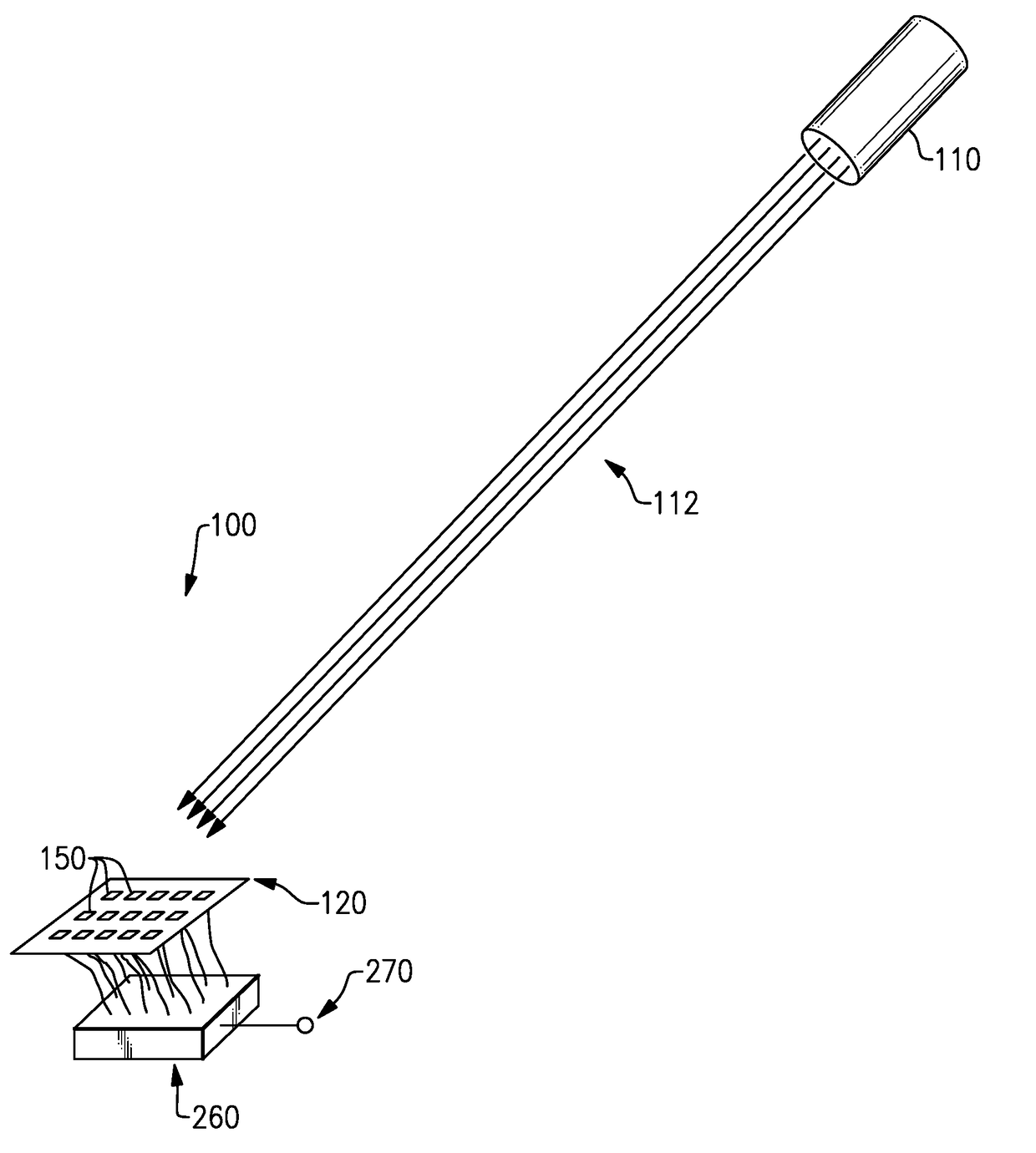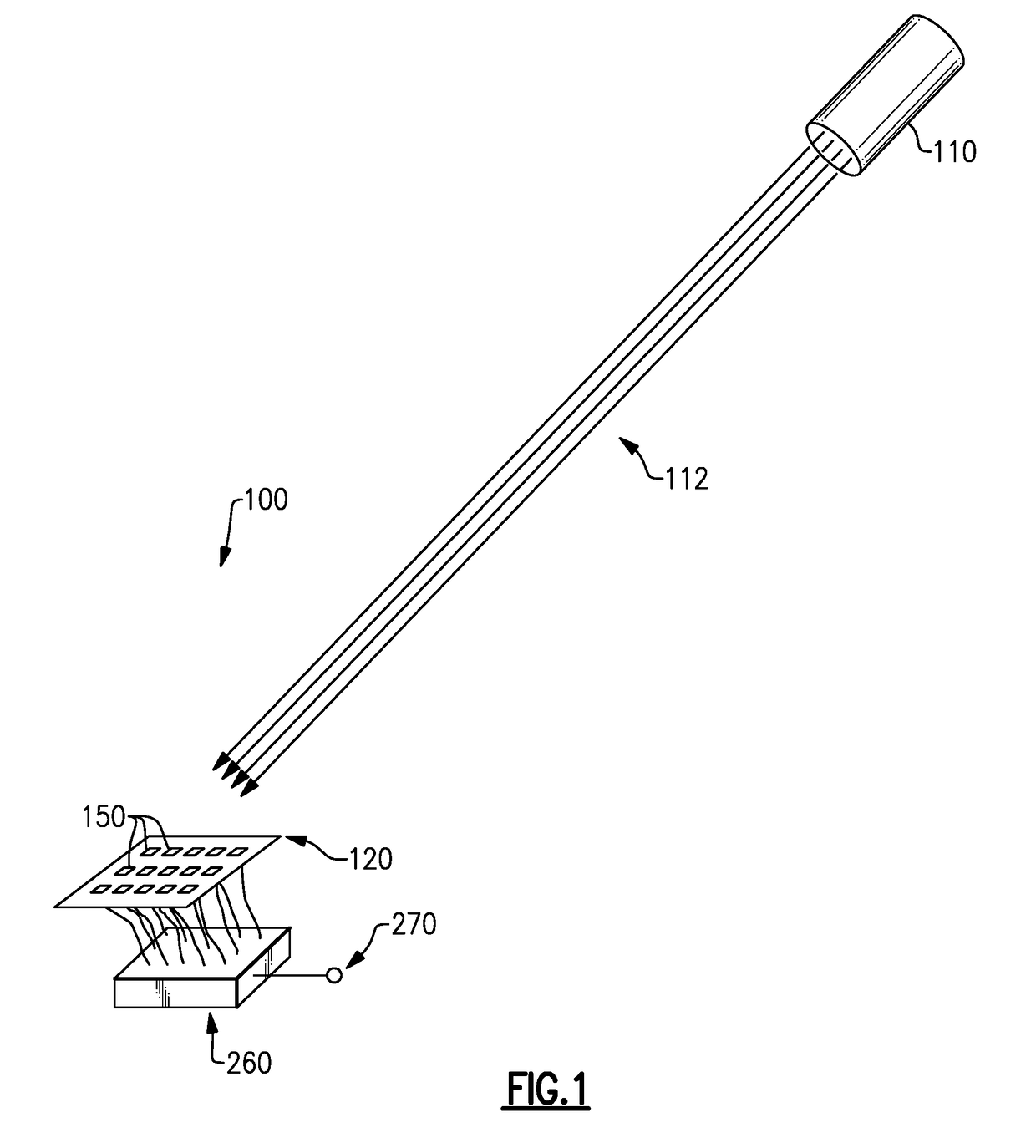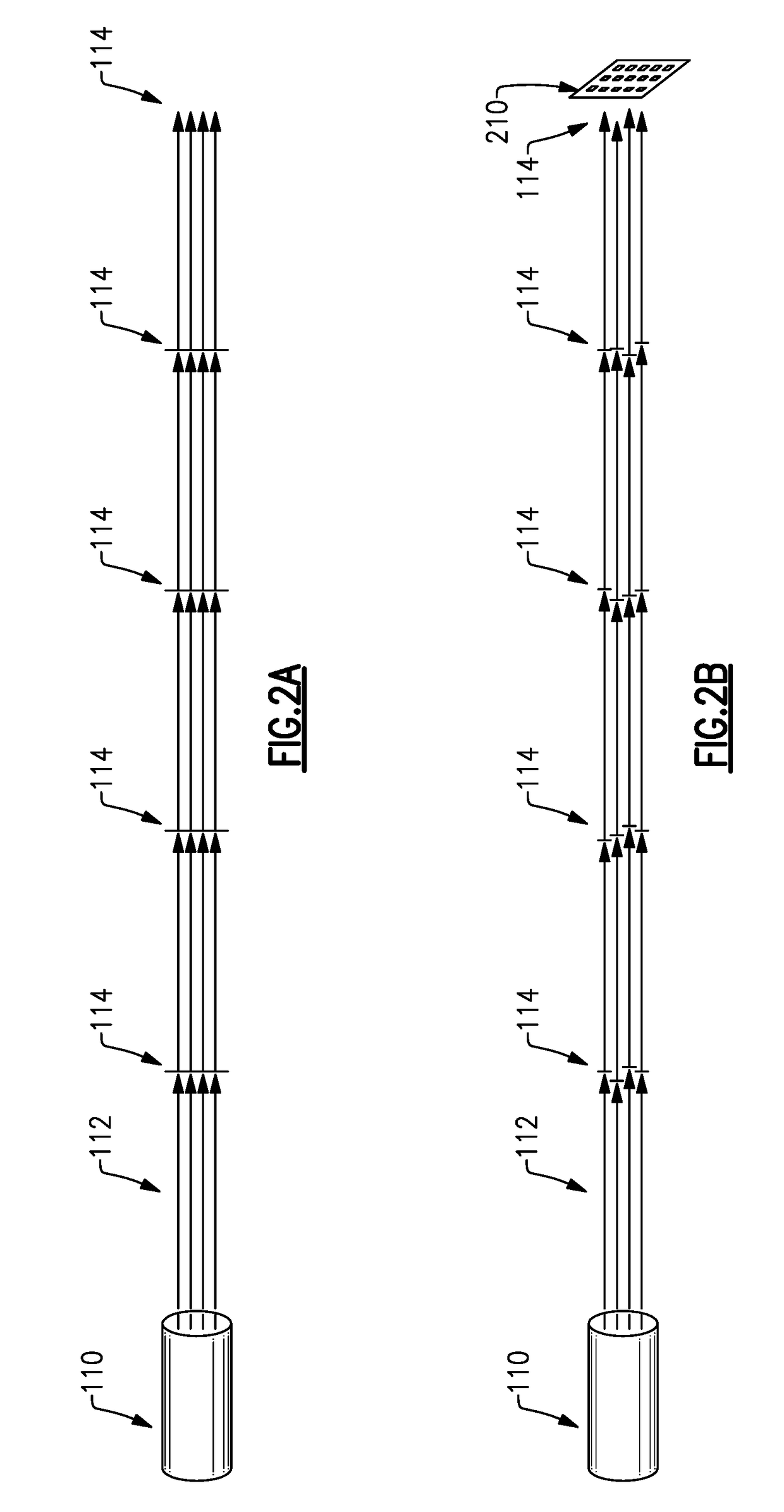Systems and methods for detection and demodulation of optical communication signals
a technology of optical communication signals and detection methods, applied in the direction of electromagnetic transmission, electrical equipment, close-range type systems, etc., to achieve the effect of soft steering and selective directionality
- Summary
- Abstract
- Description
- Claims
- Application Information
AI Technical Summary
Benefits of technology
Problems solved by technology
Method used
Image
Examples
Embodiment Construction
[0031]Aspects and embodiments are directed to arrays of detection elements as receivers for line-of-sight optical communications. The use of an array may allow light collection across an area of nondescript shape and size, and the number and placement of the detection elements may improve the signal-to-noise ratio in the received optical signal.
[0032]As discussed above, it may be desirable to maintain (or recover) coherency of the received optical signal, or to compensate for lack of coherency, particularly in applications where the optical signal may include phase modulation. Atmospheric perturbations tend to erode and ultimately destroy the coherency of an optical signal. Conventional approaches of adaptive optics to compensate for wavefront variation caused by air perturbations have several disadvantages, including large size and weight. Further, precise alignment of all elements of an adaptive optics system and precise control of the adaptive optics is generally required for acc...
PUM
 Login to View More
Login to View More Abstract
Description
Claims
Application Information
 Login to View More
Login to View More - R&D
- Intellectual Property
- Life Sciences
- Materials
- Tech Scout
- Unparalleled Data Quality
- Higher Quality Content
- 60% Fewer Hallucinations
Browse by: Latest US Patents, China's latest patents, Technical Efficacy Thesaurus, Application Domain, Technology Topic, Popular Technical Reports.
© 2025 PatSnap. All rights reserved.Legal|Privacy policy|Modern Slavery Act Transparency Statement|Sitemap|About US| Contact US: help@patsnap.com



